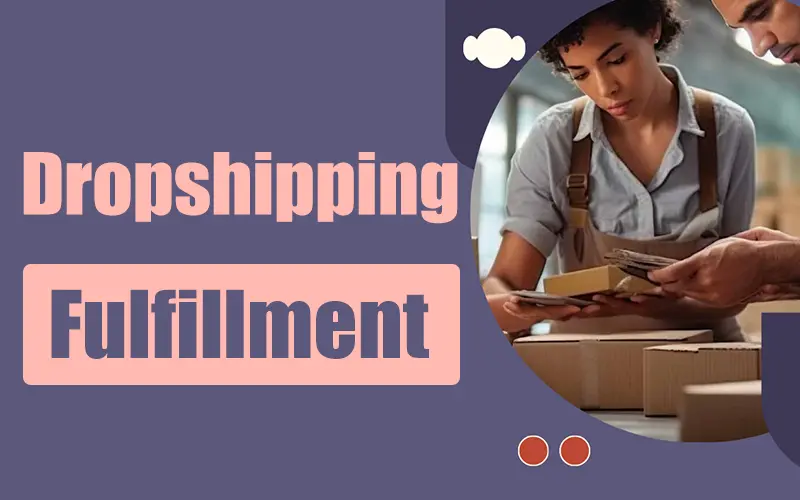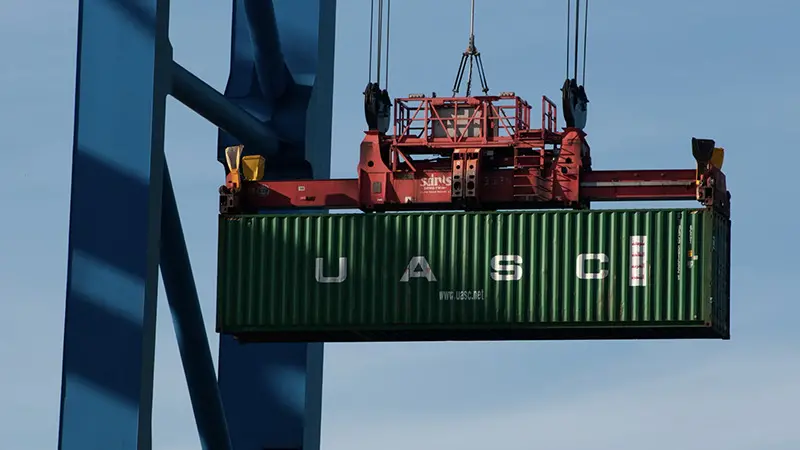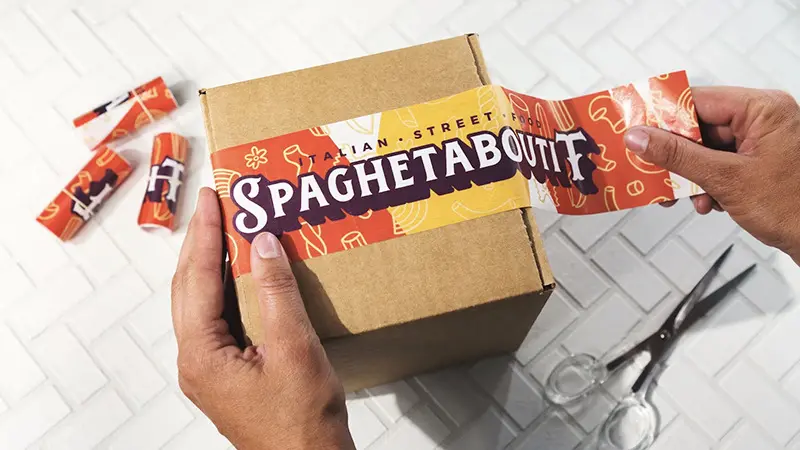In the world of dropshipping fulfillment, entrepreneurs can start an e-commerce business without worrying about initial costs. But winning at dropshipping isn’t all about choosing amazing products; it’s also about mastering fulfillment. Whether you are a newbie or a seasoned seller, it’s vital for you to know how dropshipping fulfillment works.
So, let’s delve into everything you need to know about dropshipping fulfillment. From finding reliable suppliers to optimizing your shipping workflows for fast deliveries, we have got you covered. Read on to learn more about dropshipping fulfillment and how to provide superior service to your clients.

Page overview:
What is Dropshipping Fulfillment?
Dropshipping Fulfillment: Benefits & Challenges
What is the Order Fulfillment Process
Step 1 – Connect Your Store with Dropshipping Suppliers
Step 2 – Your Customers Place Orders with Your Store
Step 3 – Automatic Information Updates
Step 4 – EPROLO Processes and Ships
EPROLO: A Comprehensive Solution for All Dropshippers
What is Dropshipping Fulfillment?
Dropshipping fulfillment is the central part of the services provided by suppliers that allow e-commerce store owners to sell online without purchasing inventory upfront. Long story short, it refers to the process of moving a product from the supplier directly to the customer without having physical storage in store.
One of the reasons why dropshipping fulfillment is so popular is because it is very simple and efficient. There are no investments in inventory, warehouse rentals, and shipping woes. However, the future of your dropshipping business lies in sourcing from great suppliers and organizing your fulfillment process to deliver on time.
Manufacturers
Manufacturers are the original producers of products. Working directly with them can lead to higher profit margins due to fewer intermediaries and lower costs. However, most of manufacturers have minimum order quantity, and it’s hard to meet it. Also, not all manufacturers offer dropshipping services, you need to handle the inventory, packing, and shipping all by yourself.
Wholesalers
Wholesalers, also most of dropshipping suppliers, act as intermediaries, buying products in bulk from manufacturers and reselling them to retailers. They are a common source for dropshippers due to their wide product range. While products from wholesalers may cost more than those from manufacturers, they offer flexible order quantities and faster shipping. It’s crucial to carefully vet wholesalers to ensure reliability.
Retailers/Dropshippers
Retailers or dropshippers create online stores, market products, and handle customer interactions without holding inventory. They rely on suppliers to fulfill orders. Remember, success in dropshipping hinges on strong relationships with reliable suppliers, optimized product listings, and excellent customer service!

Dropshipping Fulfillment: Benefits & Challenges
Dropshipping Fulfillment: Benefits
1. Low Capital Required
This is by far one of the greatest values of dropshipping fulfillment. Brick-and-mortar retail businesses require huge initial capital due to the need to invest in inventory, warehousing & logistic costs. On the other hand, you can pick up dropshipping pretty easily and start your store with little to no financial risk. You only buy products after you sell them to paying customers, reducing the risk of having a pile of unsold inventory sitting in your garage that no one wants.
2. Easy to Start
Dropshipping is relatively easy to start, even for beginners in e-commerce. Your dropshipping suppliers take charge of packing and shipping, so you don’t need to worry about managing inventory. With no need to manage physical products, you can focus on setting up your store, selecting products, and marketing them. Several platforms, such as Shopify, Amazon, and other integration services, connect directly with dropshipping suppliers, making it easy to start a dropshipping business.
3. Flexibility
Since dropshipping frees you of many obligations, you are quite flexible in running your business. Your store is cloud-based, and available 24/7. You can also offer several diverse products. With no need to pre-purchase inventory, you can add and remove products on-demand based on market trends and customer feedback. This allows you to remain competitive and quickly adjust to changing market conditions.
Dropshipping Fulfillment: Challenges
1. Low-Profit Margins
Dropshipping involves less start-up investment but also typically has a lot smaller profit margins than traditional retail. This method costs more per unit because you are not buying in bulk. Along with that, dropshipping is so competitive in nature that you could need to price your products lower than normal just to get people buying from you, which also causes more profit margin pressures. You really have to compare products and suppliers for maximum profit!
2. Stock Availability and Inventory Management
Stock management can be a real issue in dropshipping. Because you depend on suppliers to fulfill orders, there is little control over their level of inventory. Items may get out of stock suddenly which can result in late shipment and unhappy customers. To reduce this, you need to ensure that your suppliers are reliable and should use tools for real-time inventory tracking.
3. Shipping and Delivery Issues
Shipping and delivery issues are common in dropshipping due to the reliance on third-party suppliers. Shipping times can be longer, especially if your suppliers are located overseas. Additionally, managing shipping costs and ensuring accurate delivery times can be challenging. To address these issues, consider working with suppliers that offer faster shipping options and communicate clearly with customers about expected delivery times.

4. Quality Control and Returns
It can be hard to vet the product quality when dropshipping and handling returns. You have no control over the quality of the product. This means you can get customer complaints and returns, which is time-consuming and costly to handle. The ability to foster strong relationships with well-respected suppliers will help you make sure that the quality of your product remains high.
Moreover, a well-thought-out return process and policy can lessen the consequences of returns to your business.
What is the Order Fulfillment Process
The order fulfillment process is the backbone of any successful dropshipping business. It encompasses all the steps involved in receiving, processing, and delivering orders to customers.
Here’s a detailed look at the order fulfillment process in a dropshipping model, focusing on connecting with suppliers, managing orders, and ensuring timely delivery.
Step 1 – Connect Your Store with Dropshipping Suppliers
Start by researching potential suppliers, reading reviews, and comparing their offerings. Look for suppliers that provide high-quality products, competitive pricing, and dependable shipping services.
EPROLO – Best Dropshipping Supplier
EPROLO is a top-rated dropshipping supplier known for its extensive product range, fast shipping, and excellent customer service. To connect your store with EPROLO, follow these steps:
- Sign Up: Create an account on the EPROLO website.
- Integrate Your Store: Use EPROLO’s integration tools to connect your e-commerce platform (e.g., Shopify, WooCommerce) with EPROLO.
- Import Products: Browse EPROLO’s catalog and import the products to your store.
- Set Pricing: Adjust the pricing for your products to ensure a healthy profit margin.
Step 2 – Your Customers Place Orders with Your Store
Once your store is set up and products are listed, customers can browse and place orders. The process is straightforward:
- Order Placement: Customers visit your online store, select products, and complete the checkout process.
- Payment Processing: Your e-commerce platform processes the payment and confirms the order.
Step 3 – Automatic Information Updates
When a customer places an order, essential information such as the recipient’s name, address, and phone number is automatically synchronized with your supplier’s platform. This step ensures that the supplier has all the necessary details to process and ship the order accurately. The automation of this process minimizes errors and saves time.
Step 4 – EPROLO Processes and Ships
After receiving the order information, EPROLO takes over the fulfillment process:
- Order Processing: EPROLO’s team verifies the order details and prepares the product for shipment.
- Shipping: EPROLO ships the product to the customer. They provide multiple shipping options, including expedited shipping, to meet different customer needs.
- Tracking Information: Once the order is shipped, EPROLO synchronizes the tracking number with your store. This tracking number is then sent to your customer, allowing them to monitor the status of their delivery.

By using a supplier like EPROLO, you streamline the fulfillment process, reduce manual workload, and enhance customer satisfaction through timely delivery and reliable service.
The order fulfillment process in dropshipping involves multiple steps, from connecting with suppliers to managing customer orders and ensuring timely delivery. Understanding and optimizing each step of the order fulfillment process is key to building a successful and scalable dropshipping business.
Dropshipping or 3PL?
When venturing into the world of e-commerce, one of the key decisions you’ll face is choosing between dropshipping and third-party logistics (3PL) for your order fulfillment strategy. Both models have distinct advantages and disadvantages, making them suitable for different types of businesses and entrepreneurs.
Here’s a detailed comparison to help you decide which approach is best for you.
Dropshipping
Dropshipping has become a lucrative opportunity in the bustling world of e-commerce, Here are the pros and cons of dropshipping:
Pros
- Minimal Capital Required: Dropshipping allows you to start your business with very little upfront investment. Since you don’t need to purchase inventory in advance, you only pay for products after you’ve received orders from customers.
- Market Experimentation: This model offers great flexibility for testing new products and markets. You can add or remove products without financial risk, allowing you to adapt quickly to market trends.
- Flexible Investment of Time: Dropshipping is ideal for those who have limited time to dedicate to their business. Without the need to manage inventory or handle shipping logistics, you can focus on other tasks, such as marketing or customer service.
Cons
- Low-Profit Margins: The lack of bulk purchasing means higher per-unit costs, resulting in lower profit margins. Additionally, the competitive nature of dropshipping can force you to price products lower to attract customers.
- Less Control Over Product and Shipping: You have limited control over product quality, packaging, and shipping times. This can lead to customer dissatisfaction if there are issues with the supplier.
Dropshipping is a perfect option for side hustlers looking to start a business alongside their primary job due to its low capital and time flexibility, as well as for e-commerce newcomers wanting to learn the ropes without significant financial risk.
3PL (Third-Party Logistics)
For the sellers who want to control over their products, 3PL has become an popular solution for managing inventory, packaging, and shipping. Here are the pros and cons of 3PL:

Pros
- Short Delivery Times: 3PL providers often have extensive logistics networks and can offer faster shipping times, which improves customer satisfaction and loyalty.
- Scalability: As your business grows, 3PL services can scale with you, handling larger volumes of orders and allowing you to focus on business expansion.
- Reduced Overhead Costs: By outsourcing warehousing and fulfillment to a 3PL provider, you eliminate the need for your own storage space and logistics staff.
- Ample Control Over Inventory and Fulfillment Details: With 3PL, you maintain more control over your inventory, allowing for better quality control and customized packaging options.
Cons
- Substantial Capital Required: Unlike dropshipping, 3PL requires a significant upfront investment for inventory and logistics services.
- Significant Financial Risk: The need to purchase inventory in bulk poses a greater financial risk if products don’t sell as expected.
- Large Investment of Time: Managing a 3PL relationship and overseeing inventory requires a significant time commitment.
- Takes Longer to Generate Return: The higher initial investment and operational complexity mean it may take longer to see a return on investment.
Ideal for traditional retailers expanding online, who can benefit from the scalability and logistics expertise of 3PL providers, and for businesses needing optimization, as companies lacking warehouse space or seeking to optimize their time can leverage 3PL to handle fulfillment efficiently.
Both dropshipping and 3PL have their unique advantages and challenges. Dropshipping is ideal for those starting small or testing new markets with minimal investment, while 3PL is suited for established businesses looking to scale quickly with more control over their logistics. Assess your business goals, financial situation, and operational capabilities to choose the fulfillment strategy that aligns best with your needs.
EPROLO: A Comprehensive Solution for All Dropshippers
EPROLO stands out as a comprehensive solution for dropshippers, offering a suite of features to streamline your business. Here’s how EPROLO can elevate your dropshipping business:

1. Integration with Major E-Commerce Platforms
EPROLO seamlessly integrates with major e-commerce platforms such as Shopify, TikTok, and Amazon. This allows you to connect your store to EPROLO’s system effortlessly, simplifying the management of product listings, orders, and inventory. You can import products, synchronize orders, and automate updates from a single dashboard.
2. Automated Dropshipping Business Model
EPROLO’s automated dropshipping model is designed to save you time and reduce manual work. When a customer places an order in your store, EPROLO automatically receives the order details, processes it, and ships the product directly to your customer. This automation ensures accurate order fulfillment and frees you from tedious tasks.
3. Branding Options
One of the standout features of EPROLO is its branding options. You can customize every order with your logo, brand name, and even personalized messages. This level of customization helps build brand recognition and loyalty. It will set you apart from competitors who use generic packaging.
4. Warehouse Fulfillment
EPROLO offers reliable warehouse fulfillment services, ensuring that your products are stored securely and shipped promptly. They have multiple warehouses strategically located to offer faster shipping times, which enhances customer satisfaction. By leveraging EPROLO’s warehouse network, you can minimize shipping delays and improve your delivery performance, a critical factor in maintaining positive customer reviews and repeat business.
5. A Wide Range of Products
EPROLO boasts an extensive catalog of products across various categories, including fashion, electronics, home goods, and more. This wide selection allows you to expand your product offerings easily. Whether you want to focus on a niche market or offer a broad range of products, EPROLO has you covered.
Tips for Generating More Sales
Here are some effective strategies to help you boost your sales and grow your business.
1. Negotiate with Your Supplier
Having a good communication with your supplier is essential for the success of your business. To avoid stockouts, make sure that your supplier always has enough stock of your best-selling items. Securing favorable shipping rates and quicker delivery times is crucial to achieving an improved level of customer satisfaction, leading to increased sales. Feel free to bring up bulk order discounts or long-term partnerships!

2. Build a Solid Marketing Strategy
Do research on your target market and build a solid marketing strategy, providing what the audience wants and likes. Leverage demographic data & market research to establish buyer personas. Write compelling content that attracts and retains the attention of visitors to your store, such as blog posts, social media tweets or statuses, newsletters (both email and blog), and videos.
Make sure that your website is SEO-friendly by allocating relevant keywords to optimize organic search rankings along with good content.
3. Invest in Advertising and Promotion
Advertising and promotion are necessary to appeal to a wider audience and make sales. Use Google Ads, Facebook Ads, and TikTok ads to target different demographics, making you more visible. Use social media platforms for product marketing and regular posting with follower engagement. Work with influencers in your niche to leverage their audience and attain credibility, thus increasing brand exposure and, inevitably, sales!
4. Provide Excellent Customer Service
Good customer service can set your business apart, and help retain customers. Handle customer complaints and inquiries via live chat, email, or social media. Ensure a great customer experience, providing the best after-sales support including a simple return & refund process.
Start Dropshipping on Amazon without Money: Conclusion
One of the core aspects of achieving a successful e-commerce business is mastering dropshipping fulfillment. If you have a clear idea of the order fulfillment process, from finding top-notch suppliers like EPROLO to guaranteeing that orders are completed on time, and that great customer service is in place, your business can run smoother and get more satisfied customers. Good Luck with your next venture!
Dropshipping Fulfillment: FAQs
1. What is the difference between self-fulfillment and dropshipping?
Self-fulfillment involves managing your own inventory, packaging, and shipping, whereas dropshipping relies on suppliers to handle these tasks. In dropshipping, you don’t hold inventory; instead, the supplier ships products directly to customers.
2. How much do I need to invest to start dropshipping?
Starting a dropshipping business typically requires a minimal investment, often under $500. This includes setting up youre-commerce store, marketing, and initial software or platform fees.
3. How do I fulfill a dropshipping order?
When an order is placed, it is forwarded to your supplier automatically or manually, who completes the order on your behalf. Most e-commerce platforms can automate this process, syncing order details seamlessly.
4. Which is the best order fulfillment company?
EPROLO is highly regarded as a top dropshipping supplier, offering a comprehensive solution with automated order processing, fast shipping, and branding options.







